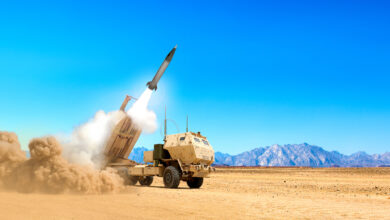US Seeks Nuclear Microreactor Prototype to Power Army Bases
The US Defense Innovation Unit (DIU) has opened a commercial solicitation for a nuclear microreactor prototype capability to power US Army bases.
The Advanced Nuclear Power for Installations (ANPI) program seeks a new, full-lifecycle power plant that will generate and distribute electricity across in-country army sites by the end of the decade.
Under the notice, the DIU requires industry partners to plan the design, construction, operation, demonstration, and management of potential microreactors.
The resulting solutions should follow standards set by the US Army Regulatory Authority and the US Nuclear Regulatory Commission throughout the technology’s operability.
Designers may submit one or more approaches inclusive of associated procedures, policies, and processes to the agency.
Selected proposals will be eligible for sole-sourced, follow-on contracts and production agreements for continued procurement until the end of the reactor’s lifecycle.
Requirements
The DIU wrote that the ANPI nuclear microreactor prototype should have a 20 percent less Uranium-235 requirement, and meet 100 percent of critical load requirements from 3 to 10 megawatts of electrical power.
The prototype should also be controlled within an army base only, and have integration features with other local infrastructure, operations centers, and maintenance systems.
It should have a commercial shore power connection and an alternative independent backup source that doesn’t utilize remote or wireless operation.
The ANPI reactor will encompass less than 5 acres (2 hectares) at an army installation, with its corresponding protected area not exceeding 540 feet (165 meters) in diameter.
Additionally, the plant’s irradiated core material should be removed from the base within five years of a contract’s completion or termination.
Energy Resilience by 2030
In its announcement, the DIU highlighted the vulnerability of existing military base power sources to modern threats and how to alleviate corresponding gaps.
“Currently, the US Army is reliant on off-site electricity providers … to conduct its globe-spanning missions in air, land, sea, space, and cyberspace,” the DIU said. “This energy dependence creates mission risks due to disruptions from extreme weather and cybersecurity attacks.”
“While current renewable energy solutions, such as wind and solar energy are carbon-free, they are intermittent, and require battery storage or other solutions to mitigate the intermittency.”
“Therefore, the Army is seeking a novel approach using recent advances in the nuclear industry that can provide continuous/reliable power regardless of weather conditions to 1) maintain military mission continuity and 2) comply with Congressional mandate under the 2021 National Defense Authorization Act to provide its critical missions with a goal of 99.9 percent reliable energy by 2030.”












